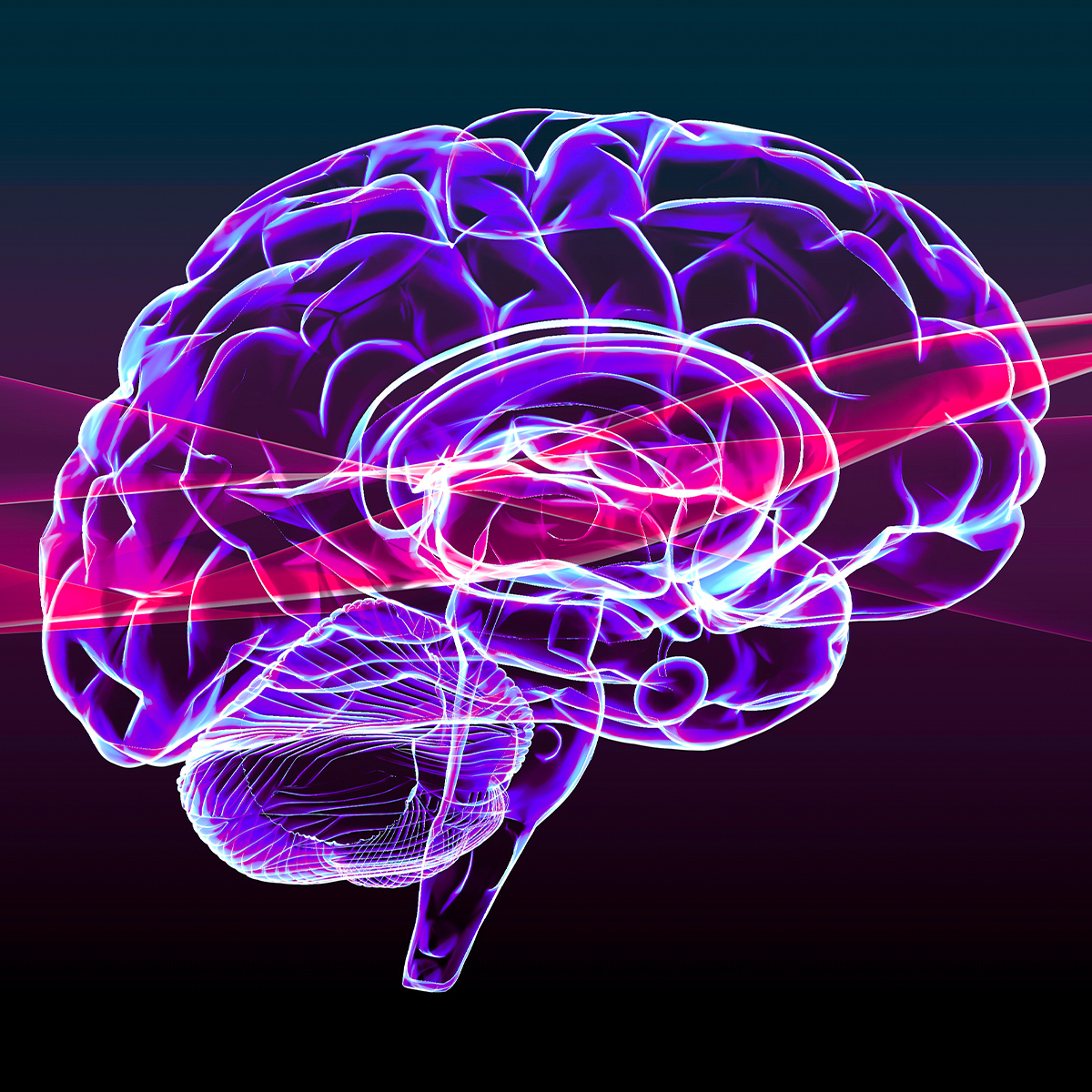-
Property & Casualty
Property & Casualty Overview

Property & Casualty
We offer a full range of reinsurance products and the expertise of our talented reinsurance team.
Trending Topics
Publication
Production of Lithium-Ion Batteries
Publication
PFAS – Rougher Waters Ahead?
Publication
Generative Artificial Intelligence in Insurance – Three Lessons for Transformation from Past Arrivals of General-Purpose Technologies
Publication
Did you Know? A Brief Reflection on La Niña and El Niño
Publication
Time to Limit the Risk of Cyber War in Property (Re)insurance
Publication
Pedestrian Fatalities Are on the Rise. How Do We Fix That? -
Life & Health
Life & Health Overview

Life & Health
We offer a full range of reinsurance products and the expertise of our talented reinsurance team.
Training & Education
Publication
When Actuaries Meet Claims Managers – Data-Driven Disability Claims Review
Publication
Chronic Pain and the Role of Insurers – A Multifactorial Perspective on Causes, Therapies and Prognosis
Publication
Fasting – A Tradition Across Civilizations
Publication
Alzheimer’s Disease Overview – Detection and New Treatments
Publication
Simplicity, Interpretability, and Effective Variable Selection with LASSO Regression Moving The Dial On Mental Health
Moving The Dial On Mental Health -
Knowledge Center
Knowledge Center Overview

Knowledge Center
Our global experts share their insights on insurance industry topics.
Trending Topics -
About Us
About Us OverviewCorporate Information

Meet Gen Re
Gen Re delivers reinsurance solutions to the Life & Health and Property & Casualty insurance industries.
- Careers Careers
Where Soul Meets Body – The Link Between Somatic and Psychiatric Health

March 21, 2024
Annika Luckmann
English
Deutsch
The mind-body connection
What is the relationship between the mind and the body? One of the first philosophers to investigate this complex question was René Descartes. In the 16th century, he developed the concept of dualism: the conviction that mind and body are made of two different substances.
The mind has no physical existence and therefore, takes up no space. The body, on the other hand, does take up space. Descartes was sure that there had to be a place in the brain where the material and immaterial substances communicate. He was convinced that the pineal gland is “the principal seat of the soul and the place in which all our thoughts are formed”.1
Today, we know that the pineal gland is an endocrine gland, responsible for melatonin production in response to the light-dark cycle, and thereby an important key player in the circadian system, our inner clock. But what is today’s understanding of the mind-body connection and where is the mind located?
I asked the Microsoft search engine’s Bing artificial intelligence (AI) the question and received the following reply: the mind is “a faculty that manifests itself in mental phenomena like sensation, perception, thinking, reasoning, memory, belief, desire, emotion, and motivation. The exact nature and location is unknown and debated about.”2 However, that does not solve the mind-body problem either. Modern approaches to the mind-body connection are physicalism, functionalism, embodied cognition and the extended mind.
Physicalism & functionalism
The mind is identical with, or reducible to, the brain and is located in the brain or distributed across different brain regions. One example often cited by defenders of physicalism is the mental state of pain, which is identical to the activity of C‑fibres in the brain. In functionalism, everything that has a brain has a mind.
Telling people that their complex emotions such as joy or sorrow, but also their sense of self and personal identity, and even the concept of free will, is nothing more than the state of assemblies of nerve cells and molecules is not an answer to the mind-body problem most people can accept. As Francis Crick said in 1994 “You’re nothing but a pack of neurons”.3
Embodied cognition & extended mind
The mind is not locked in the brain, but extends far beyond it, and is located in the body and its interaction with the environment, and our social interactions. According to defenders of this view, the brain is not the seat of cognition, and the brain does not process information in the same way as a computer.
The topic of mind and body connection is still a topic heavily studied by philosophers and neuroscientists. New publications find more and more proof for a connection of mind and body visible in brain processes. One recent study suggests that areas in the motor cortex have been found to play a major role in integrating planning and purpose (therefore, processes associated with the mind) and physiology, behavior and movement (processes associated with the body).4
Examples of the mind-body connection
Several examples reflect the connection between our mind and body. Epigenetics is one of those, and illustrates how the immaterial can influence the material. Epigenetics describes how environmental factors can change the way genes are expressed without altering the DNA sequence. (If you are interested in the topic of epigenetics, see this article by my colleagues titled “Epigenetic Testing – The Way Ahead for Life & Health Underwriting?”.)
One study found that children who experienced abuse or neglect have altered patterns of gene expression. This alteration led to an increased risk of developing mental and physical disorders in the long-term.5 Research has even supported the notion of transgenerational stress-induced epigenetics,6 meaning that the stressors a person’s grandparents endured may affect their vulnerability to certain mental and physical disorders and their resilience.7
A more familiar example is how stress affects the body. Inflammatory skin conditions, such as acne psoriasis and rosacea, have all been found to be worsened by chronic stress. But even if no inflammatory disease is present, stress affects our body in several ways. It is beneficial that the body reacts to stress with an immune response, preparing to fight potential pathogens, but if one is experiencing prolonged stress, this immune response is triggered chronically and the risk of developing chronic diseases will increase significantly.
The key player in this effect is cortisol. A very elegant system exists in the human body that aims to achieve a state of homeostasis when it comes to stress hormones, known as the hypothalamic–pituitary–adrenal axis (HPA axis). If cortisol levels remain high, this system will eventually fail and lead to an imbalance as the cortisol metabolism is decreased and cortisol levels remain high. This dysregulation of the HPA axis can increase someone’s risk of being obese, developing cardiovascular conditions and catching infections.8
What can individuals do to use the mind-body connection positively? Not all prolonged stressful situations can be avoided, but there are ways to prevent or partly protect the body from suffering long-term consequences of stress. One way that has been found to be beneficial is meditation, which can work as a mind-body mediator.9 It decreases stress, thereby improving overall mental health. Positive emotions have also been found to work as a protective shield.
The field of psychoneuroimmunology studies how the nervous system, the endocrine system and our immune system interact. Studies suggest that positive emotions boost the immune system. For example, participants who reported higher levels of stress and negative emotions, when exposed to a cold virus were more likely to become sick from the cold virus, compared to subjects reporting less stress and a more positive emotional state.10
Obviously, emotional states cannot always be steered to being positive and stress is a part of life. These studies, however, illustrate how important it is to find ways of decompressing and finding joyful moments in stressful chapters of life. But there is also a way to cheat the system: research has shown that if a person forces a smile, this may trick the brain into feeling more positive emotions.11
The gut-brain axis is another well-studied feature of the mind and body connection. We all know the expression of a “gut feeling”, and it is not for nothing that the gut is sometimes called the “second brain”. Gut health plays an important role in the adaptation to stress, and prolonged high cortisol levels have been shown to increase the permeability of the gut in animals12 and humans.13
Some studies have linked imbalances in gut microbiota to certain mood and anxiety disorders,14 which does not mean that poor gut health causes depression in a person who would have otherwise not been affected, but that gut health plays a role in people struggling with clinical depression. It has been found that the microbiome of depressed patients lacks bacterial diversity, which impairs their overall ability to react to stress.15
The over-representation of certain bacterial species has also been correlated to inflammatory processes.16 Furthermore, the conversion from the amino acid tryptophan into serotonin, a neurotransmitter thought to play an important role in several psychiatric conditions, has also been found to be diminished in a depressed study population.17 Links to clinical episodes of bipolar disorder and schizophrenia have also been reported.18
Psychiatric diagnoses and their toll on the body
All-cause mortality and morbidity for those who have been diagnosed with a psychiatric illness are compromised. Even though suicide may be the trigger that comes to mind for most people, when discussing increased mortality in applicants with a mental health history, this is only a small part of the reason that life products are coming with a higher premium for this group of applicants.
If we take a look at disorders related to severe stress or traumatic events, such as post traumatic stress disorder, acute stress disorder or adjustment disorder, we see an increased all-cause mortality across these diagnoses.19 A study from Sweden,20 published in 2022, using the national patient register as its subject pool, wanted to find out whether the all-cause mortality in this study population was confounded by genetic factors, or whether the diagnosis itself played a major part in this.
The subjects were divided into three main groups. Group 1 was the “exposed group”, meaning those diagnosed with a stress-related disorder (with two sub-groups, one being compared to group 2 and one to group 3); group 2 were a sex-matched control group; group 3 were siblings of the exposed participants, who were unexposed themselves.
Participants in the exposed group were more likely to be divorced or widowed, had a lower family income level, a higher burden of somatic diseases and were more likely to have a history of other psychiatric disorders. The all-cause mortality was at its peak in the first year after diagnosis (3‑fold risk, HR 3.19 [95% CI, 2.87–3.54]) but stayed significantly higher compared to the control group (1.6‑fold risk, HR, 1.64 [95% CI, 1.60—1.67]).
Suicide played a large role in the higher all-cause mortality, but cardiovascular diseases were also significant. According to the authors, 70% of the deaths observed in their study population could have been potentially avoided, for example through proper treatment. The excess mortality was found to be largely independent of the genetic component they tested by including siblings. Possible reasons discussed for the increased mortality are the comorbid psychiatric illness found in more than a third of the exposed group; chronic psychological stress leading to a dysregulated immune system and possibly inflammation; and unhealthy coping mechanisms and behaviors, such as smoking, poor diet, and a lack of physical activity that then contributes to a higher incidence of (multiple) major chronic diseases in this subject group.
Diagnoses seen fairly often in underwriting are anxiety and depression. How do these diagnoses affect a person’s overall health? In 2007, a group of researchers wanted to explore the relationship between chronic physical conditions and depression and/or anxiety.21 Across the board, higher incidences of hypertension, arthritis, heart disease, chronic headache and multiple pain syndrome were observed. The odds ratio for someone with a non-comorbid depression (meaning without anxiety) for heart disease was found to be 2.0; for those with anxiety (and no comorbid depression) it was 1.9; and for someone who has both diagnoses, it climbed to 3.0.
For multiple pains, there is a 4.5‑fold increase in those who are affected by both depression and anxiety, compared to individuals who are suffering from neither. When underwriting disability, we should therefore be aware of this relationship between mind and body.
Implications for underwriting
When underwriting an applicant who reports episodes of poor mental health or a medical history of psychiatric illness, it is important to keep in mind that mental health is directly connected to overall health, thereby influencing the mortality and morbidity of the applicant.
Studies have shown that the mind-body connection can affect someone’s health status and wellbeing in various ways. It is important to keep in mind that “physical” disorders should not be seen as separate entities from mental health and psychiatric diagnoses. If someone is reporting mental health issues, the risk of their developing a chronic, seemingly unrelated condition, such as heart disease or arthritis, is significantly increased, passively impacting their disability risk in the long run, even if the physical condition was not apparent at the underwriting stage.
- Descartes, R. (2009). The passions of the soul (1649). In B.F. Gentile & B.O. Miller, Foundations of psychological thought: A history of psychology (pp.5‑21). Sage Publications, Inc.
- Bing AI. Personal communication, 19 November 2023
- Crick, F.H.C. (1994). The astonishing hypothesis: The scientific search for the soul. Charles Scribner’s Sons
- Gordon, E.M., et al. A somato-cognitive action network alternates with effector regions in motor cortex. Nature. 19 April 2023. DOI: 10.1038/s41586‑023‑05964‑2
- Yang, B.Z., et al. Child Abuse and Epigenetic Mechanisms of Disease Risk. American Journal Of Preventive Medicine 2013, 44: 101‑107
- Bale, T.L. Lifetime stress experience: transgenerational epigenetics and germ cell programming. Dialogues Clin Neurosci. 2014;16:297‑305
- Youssef, N.A. Potential Societal and Cultural Implications of Transgenerational Epigenetic Methylation of Trauma and PTSD: Pathology or Resilience? Yale J Biol Med. 2022 Mar 31;95(1):171‑174. PMID: 35370497; PMCID: PMC8961703
- Russell, G., Lightman, S. The human stress response. Nat Rev Endocrinol 15, 525‑534 (2019). https://doi.org/10.1038/s41574‑019‑0228‑0
- Creswell, J., et al. Mindfulness Training and Physical Health: Mechanisms and Outcomes. Psychosomatic Medicine 81(3):224‑232, April 2019
- Cohen S., et al. Emotional style and susceptibility to the common cold. Psychosom Med. 2003 Jul–Aug;65(4):652‑7. doi: 10.1097/01.psy.0000077508.57784.da. PMID: 12883117
- Marmolejo-Ramos, F., et al. (2020, February 4). Your face and moves seem happier when I smile. Facial action influences the perception of emotional faces and biological motion stimuli
- Zheng, G., et al. Corticosterone mediates stress-related increased intestinal permeability in a region-specific manner. Neurogastroenterol. Motil 2013;25:e127‑e139
- Dunlop S.P., et al. Abnormal intestinal permeability in subgroups of diarrhea-predominant irritable bowel syndromes. Am J Gastroenterol 2006;101:1288‑94
- Kumar A., et al. Gut Microbiota in Anxiety and Depression: Unveiling the Relationships and Management Options. Pharmaceuticals (Basel). 2023 Apr 9;16(4):565. doi: 10.3390/ph16040565. PMID: 37111321; PMCID: PMC10146621
- Madison, A., Kiecolt-Glaser, J.K. Stress, depression, diet, and the gut microbiota: human–bacteria interactions at the core of psychoneuroimmunology and nutrition. Current Opinion in Behavioral Sciences 2019;28:105‑110
- Khorsand, B., et al. Overrepresentation of Enterobacteriaceae and Escherichia coli is the major gut microbiome signature in Crohn’s disease and ulcerative colitis; a comprehensive metagenomic analysis of IBDMDB datasets. Front Cell Infect Microbiol. 2022 Oct 4;12:1015890. doi: 10.3389/fcimb.2022.1015890. PMID: 36268225; PMCID: PMC9577114
- Gao, K., et al. Tryptophan Metabolism: A Link Between the Gut Microbiota and Brain. Advances in Nutrition. 2020. 11:3:709‑723
- Bransfield, R.C., et al. Microbes and Mental Illness: Past, Present, and Future. Healthcare (Basel). 2023 Dec 29;12(1):83. doi: 10.3390/healthcare12010083. PMID: 38200989; PMCID: PMC10779437
- Lee, H., Singh G.K. Psychological distress, life expectancy, and all-cause mortality in the United States: results from the 1997‑2014 NHIS-NDI record linkage study. Ann Epidemiol. 2021 Apr;56:9–17. doi: 10.1016/j.annepidem.2021.01.002. Epub 2021 Jan 13. PMID: 33453384
- Tian, F., et al. Association of stress-related disorders with subsequent risk of all-cause and cause-specific mortality: A population-based and sibling-controlled cohort study. Lancet Reg Health Eur. 2022 May 28;18:100402. doi: 10.1016/j.lanepe.2022.100402. PMID: 35663363; PMCID: PMC9160321
- Scott, K.M., et al. Depression-anxiety relationships with chronic physical conditions: results from the World Mental Health Surveys. J Affect Disord. 2007 Nov;103(1–3):113‑20. doi: 10.1016/j.jad.2007.01.015. Epub 2007 Feb 9. PMID: 17292480





